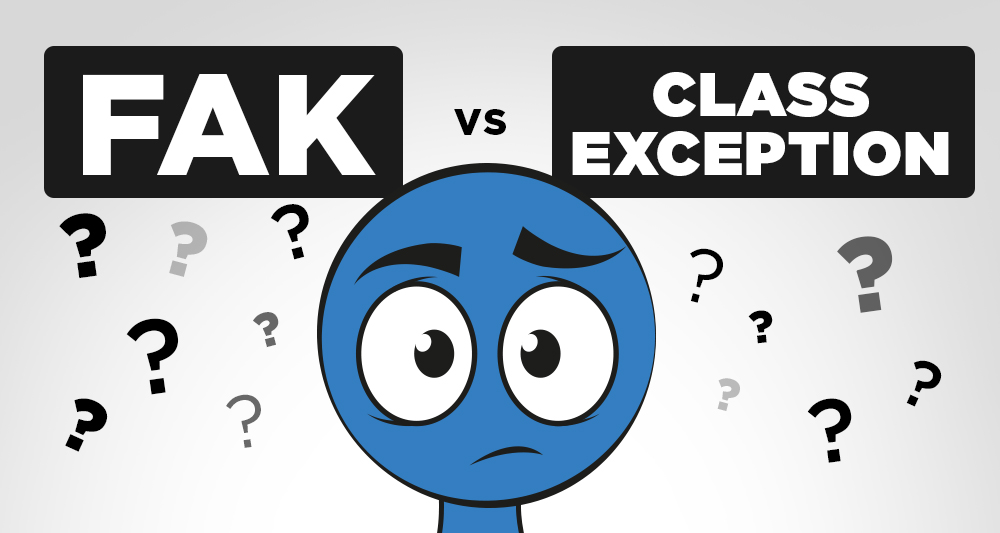You may have heard the term FAK freight class thrown around, but it can be difficult to understand all that it entails. You may find that knowing the difference between FAKs and class exception could save you both money and heartburn.
In layman terms, FAKs (Freight All Kinds) are tariff classifications for various goods and commodities that are pooled and shipped at one freight rate.
In other words, the shipment gets rated at the same class regardless of the commodity. The concept of FAKs was built around developing easier pricing and billing between carriers and shippers that were moving multiple freight classes. In theory, FAKs simplified the Less Than Truckload (LTL) landscape.
The LTL industry’s desire to simplify has also created some confusion, especially when considering whether or not a customer has a FAK freight class or a class exception. Class exceptions, though similar, are not FAKs.
A class exception typically covers a specific range of freight classes, whereas FAKs cover all freight classes.
A typical class exception may contain verbiage that states something such as, “All commodities class 50-150 are treated as class 77.5. Anything above class 150 will ship at actual class.” That statement is pretty succinct for the average LTL professional. However, as the LTL industry continued to strain against its natural complexity, over-simplification in communication has taken firm root.
Shippers now regularly refer to their discounts as being FAKs. Those, in fact, are very rare and a deep dive into a typical shipper’s tariff finds that most shippers instead have a class exception. The reasoning behind it is that carriers prefer to stay away from FAKs as they represent a significant discount of rates and require significant volume to warrant. Only the largest shippers can leverage FAKs.
Most shippers today simply can’t leverage the type of volume to justify the FAK freight class, and that makes a class exception user-friendly as well as a healthy compromise.
Understanding how a class exception differs from a FAK can create effective communication between shippers and carriers. For the shipper, it is key to understand that both multi-class shipments and high volume measurements are prerequisites to discuss FAKs with a carrier. Carriers can avoid unnecessary pricing negotiations by correctly identifying when their tariff covers a true FAK or when it’s simply a class exception as they discuss with current and potential customers.
Arranging each shipment under the correct classification can save you time and energy. Follow these clarifications to avoid unnecessary roadblocks and get shipments on their way.
###
The England Logistics Less-Than-Truckload (LTL) division can provide nationwide service for shipments of almost any shape or size. To bring simplicity to shipping processes, LTL offers a one-stop solution with the information needed to get shipments on the road. Dedicated team members are available 24/7 to ensure a timely and cost-efficient delivery.



